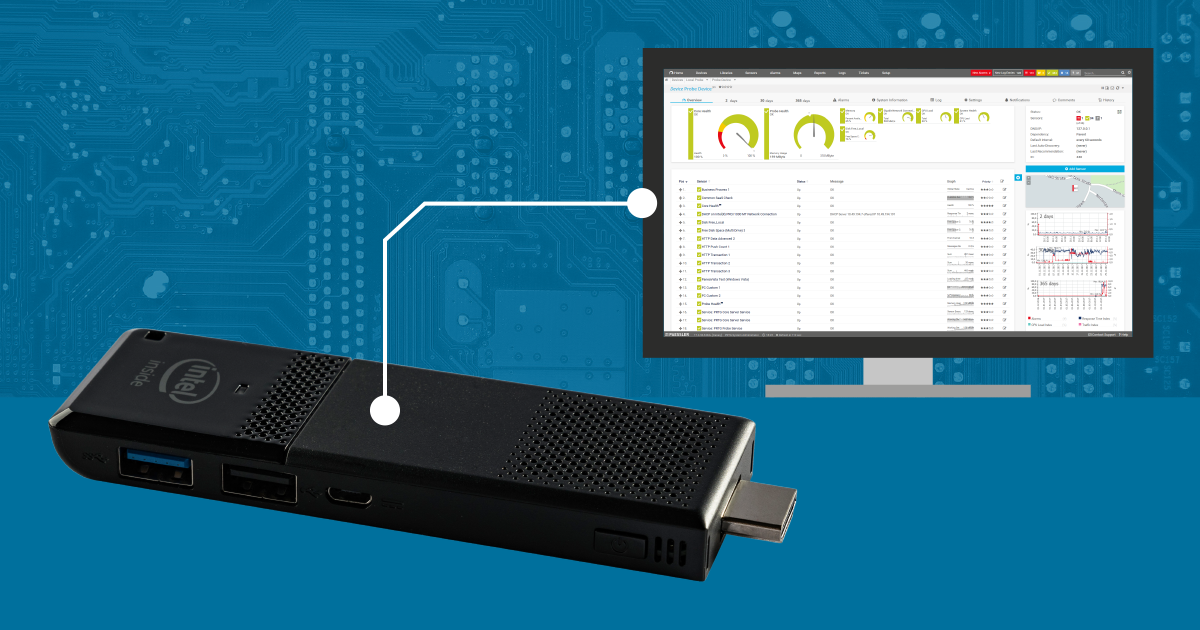Probes in Paessler PRTG monitoring software play an important role in monitoring infrastructure: they expand the monitoring capabilities of the PRTG core server to remote locations and networks. A probe is essentially an additional monitoring instance that provides the sensors to monitor networks, devices, and applications not covered by the PRTG core server. Probes monitor independently and send the monitoring data back to the core server for each check they perform.
The use of probes could look like this:
How to extend monitoring to Linux?
Up to now, you have been limited to hardware running the Windows operating system for using probes. But this changes with the multi-platform probe, which can be installed on other operating systems besides Microsoft. These include Linux operating systems such as Ubuntu, Debian and Redhat Enterprise.
Furthermore, this probe can be installed on ARM-based devices, such as Raspberry Pi, and also on Docker.
Here are the supported platforms in detail:

i
Please note: The multi-platform probe is currently compatible with PRTG Network Monitor and PRTG Enterprise Monitor. The compatibility with PRTG Hosted Monitor is planned for this summer.
i
Please note: If you have previously installed the multi-platform probe with the deprecated install-mpp-nats.sh script, you must uninstall it before continuing with the process to install the most recent version.
How to install the multi-platform probe in 3 steps?
To install multi-platform probes, you must first prepare your systems to support the connection to the PRTG core server:
Step 1: Install a NATS server
The NATS server handles the exchange of data between multi-platform probes and a PRTG core server.
Step 2: Configure the connection in PRTG
Once you have installed a NATS server, you need to configure your PRTG setup. This involves a two-step process where you
- configure the connection between the NATS server and the PRTG core server via a probe adapter and
- enter the access keys of all multi-platform probes.
Step 3: Multi-platform installation
Once you have set up your PRTG core server to support connections to multi-platform probes, you can create as many multi-platform probes as you need.
Depending on the platform on which you are installing the probe, the installation process may vary. Therefore, we have created a manual that details installation steps based on platform. You can download it here:
👉 Multi-platform probe - Comprehensive monitoring for Linux systems
Alternatively, you can watch the following video, where our colleague Felix shows you step by step how to install and configure the multi-platform probe on Linux.
What monitoring options does this probe offer?
By using the multi-platform probe, you have a variety of sensors at your disposal to implement a wide range of monitoring scenarios.
Sensors that can be used include the following:
What development is planned for the future?
We are constantly working on expanding the range of functions for the multi-platform probe. This includes support for PRTG Hosted Monitor, and simplifying the installation process by supporting deployment via the RPM package manager and Docker containers for easy, platform-independent implementation.
For the multi-platform probe release notes, please see this Knowledge Base article:
👉 What are the release notes for the multi-platform probe?
We'd love to hear your feedback!
To better understand your needs, we are collecting feedback through a survey to help us develop some of our new features, and would love to hear your opinions.
 Published by
Published by 













